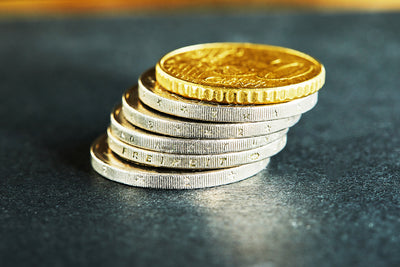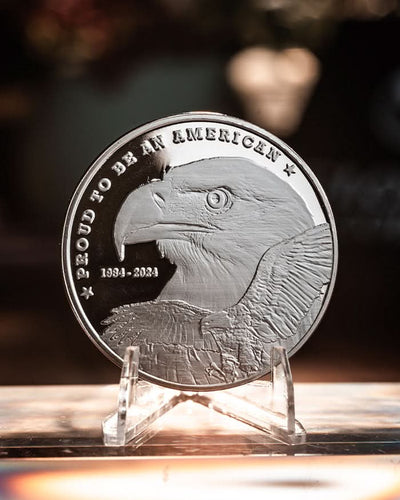Ancient Gold Coins: Valuation, History, and Buying Tips
As a numismatic dealer specializing in modern precious metal coins post-1986, I’ve built a career helping collectors and investors secure American Eagles, Canadian Maple Leafs, and other bullion treasures. But my passion for coins extends to the ancient world, where gold coins tell stories of empires, artistry, and economic power. Ancient gold coins, with their intricate designs and historical weight, are surging in popularity, and I’m here to guide you through their valuation, history, and smart buying strategies. This post on “ancient gold coins” blends my expertise with a deep dive into these timeless artifacts, offering insights for collectors and investors eager to explore this captivating market. Be sure to visit our dedicated page showcasing our collection of ancient gold coins, where you can find detailed information and current promotions.
Key Takeaways
-
Historical and Financial Value: Ancient gold coins combine aesthetic beauty, historical significance, and a hedge against inflation, making them prized by collectors and investors.
-
Authentication Is Critical: Verifying authenticity with reputable dealers and advanced technology protects against counterfeits and preserves value.
-
Growing Market: The global market for ancient gold coins is booming, driven by rarity and demand, with potential for significant appreciation if approached strategically.
Introduction to Ancient Coins

Ancient coins are more than just pieces of metal; they are tangible connections to the past, offering a glimpse into the lives and cultures of ancient civilizations. The study of ancient coins, known as numismatics, is a rewarding hobby that combines the thrill of the hunt with the joy of discovery. Whether you’re holding an ancient Greek coin or a Roman denarius, each coin tells a story and provides a unique window into history.
Ancient coins come in various forms, including the renowned ancient Greek coins and the iconic Roman coins, as well as other types from around the world. The value of an ancient coin is determined by its rarity, condition, and historical significance, making each coin a unique and valuable addition to any collection. For collectors, the process of verifying the authenticity of an ancient coin is crucial. Reputable sources, such as the NGC Ancients certification, provide the assurance needed to proceed with confidence.
Building a collection of ancient coins is a journey filled with excitement and discovery. Each coin is a rare and precious find, and the moment of discovery can set your heart racing. Whether you’re a seasoned collector or just starting out, ancient coins offer a profound connection to the past and a deeper understanding of the history of the world. By exploring the world of ancient coins, collectors can uncover hidden treasures and gain a new appreciation for the art and history of ancient civilizations.
The Allure of Ancient Gold Coins

I’ve held modern gold coins fresh from the U.S. Mint, their surfaces gleaming with precision, but ancient gold coins? They’re a different beast. Each one feels like a portal to a lost world—Lydia, Greece, Rome—etched with the hands of artisans long gone. As a dealer, I’m drawn to their rarity and the stories they carry, from King Croesus’s wealth to the triumphs of Roman emperors. These coins aren’t just gold; they’re history you can hold, blending the stability of precious metals with the mystique of ancient civilizations.
Their scarcity fuels their allure. Unlike the millions of American Eagles I deal in, ancient gold coins survive in limited numbers, often fewer than a few hundred for certain issues. This rarity, paired with growing collector demand, drives their value skyward. I’ve seen clients’ eyes light up when I describe a coin’s journey from an ancient mint to their hands. Beyond aesthetics, these ancient coins hedge against inflation and currency devaluation, offering security in uncertain times—a quality I emphasize when advising investors accustomed to modern bullion.
Historical Roots of Ancient Gold Coins

Gold coins have symbolized wealth and power for millennia, reflecting the prosperity of empires. As a dealer, I’m fascinated by how these coins served dual roles: currency for trade and propaganda for rulers. They’re snapshots of history, linking us to pivotal moments like the rise of Lydia or Rome’s conquests. Understanding their origins helps collectors appreciate their value and informs smart buying decisions.
Origins and Early Uses
Around 550 BC, Lydia, under King Croesus, minted the first gold coins from electrum—a natural alloy of gold and silver. These coins, called staters, revolutionized trade by standardizing value, replacing barter with a trusted medium. I marvel at how these early coins, stamped with a lion and bull, embodied authority and boosted economies. They set a precedent for later civilizations, from Persia to Greece, and their reliability made them symbols of ancient gold stability—a concept I see echoed in modern bullion like the coins I sell.
Electrum staters spread across trade routes, facilitating commerce and showcasing the issuer’s power. Their cultural significance, often tied to rare royal decrees or religious symbols, adds layers of value for collectors. When I explain this to clients, they see why these coins transcend their metal content.
Prominent Ancient Civilizations
Ancient Greece, Rome, and Egypt elevated gold coinage to an art form. Greek coins, like the Athenian tetradrachm (often silver but occasionally gold), featured deities like Athena or city symbols, reflecting local pride. I’ve studied the “owl of Athens,” a coin so iconic it fueled Mediterranean trade. Greek staters, such as those from Lydia, were among the first standardized gold coins, their designs—deities, rulers, or animals—offering collectors a window into cultural values.
Rome took coinage to new heights, minting gold aurei to celebrate victories or deify emperors. I’ve seen clients gravitate to aurei bearing Nero or Augustus, drawn by their historical weight. Egypt, meanwhile, pioneered gold as a trade medium, using standardized gold rings before transitioning to coins under Ptolemaic rule. These civilizations’ innovations in design and minting technology make their coins prized today, much like the modern commemoratives I source for clients.
Iconography and Symbolism
The imagery on ancient gold coins is a language of its own. Owls on Athenian coins symbolized wisdom; Pegasus on Corinthian staters evoked mythology. Roman coins often bore emperors’ portraits, signaling authority. I find these symbols endlessly compelling—they tell stories of belief, power, and identity. For collectors, decoding this iconography adds depth to a collection, much like understanding the eagle on a modern American coin ties it to national pride. Historians rely on these designs to reconstruct ancient economies and cultures, making each coin a historical document.
Types of Ancient Gold Coins

Ancient gold coins vary widely, reflecting the diversity of their issuing civilizations. As a dealer, I help clients navigate these types, drawing parallels to the standardized designs of modern coins. Here’s a closer look at key examples, with a focus on Greek coins, given their prominence in the market and how to set up a collection.
Drachmas and Staters
Greek drachmas and staters were the backbone of ancient economies. Drachmas, often silver but occasionally gold, featured local deities or symbols, like Athena or city emblems, showcasing Greece’s regional diversity. Staters, typically gold or electrum, were heavier and used for major transactions. Corinthian staters, with Pegasus or Athena, are collector favorites for their artistry. I compare these to modern bullion coins—standardized yet varied, each with a story that adds depth to a collection. Subdivisions like hemidrachms or tetradrachms add complexity, offering collectors options across budgets.
Notable Examples
Some ancient gold coins stand out for their rarity and value. The gold stater from Panticapaeum (c. 340 BC), depicting a satyr and griffin, sold for $6 million, making it the priciest ancient coin ever. I’ve seen clients chase similar rarities, like the Lydian stater, valued for its role as one of the first coins. These coins’ intricate designs and historical significance mirror the appeal of limited-edition modern proofs I deal in, but their scarcity pushes prices higher. For collectors, owning such a coin is like holding a piece of the ancient world’s soul.
President Reagan’s Influence on Modern Coinage
In 1985, President Ronald Reagan signed the Gold Bullion Coin Act, a pivotal moment that reshaped my industry. By directing the U.S. Mint to produce gold and silver American Eagles, Reagan responded to investor demand for tangible assets, competing with global bullion like South Africa’s Krugerrand. I remember the buzz this created—suddenly, Americans had government-backed bullion, a modern echo of ancient gold coins’ reliability. This legislation not only launched the coins I specialize in but also fueled interest in precious metals, indirectly boosting the market for ancient coins by highlighting gold’s enduring value.
Authenticating Ancient Gold Coins

Authentication is the cornerstone of dealing in ancient coins, just as it is with the modern coins I sell. A fake can devastate a collection’s value, so I emphasize rigorous verification to my clients.
Importance of Authentication
Authentic coins carry historical and financial weight, linking collectors to ancient narratives. I advise buying from dealers with impeccable reputations, like those I work with for modern coins. Provenance—documented ownership history—adds assurance, much like a certificate of authenticity for a 2025 American Eagle. Reputable auction houses, such as Stack’s Bowers, are also reliable sources, offering guarantees that protect investments.
Methods of Verification
Experts use visual inspections, weight measurements, and minting analysis to verify coins. Modern tools like X-ray fluorescence (XRF) analyzers, which I’ve seen used on high-value modern coins, non-invasively confirm metal composition. For ancient coins, these methods detect anomalies—say, modern alloys in a supposed Lydian stater. Engraving quality and wear patterns also reveal fakes, which often lack the crispness of genuine strikes. I guide clients to dealers employing these techniques, ensuring their purchases are sound.
Common Counterfeits
Counterfeiters are crafty, using modern tech to mimic ancient coins. Fakes often use base metals coated in gold, detectable via XRF or weight (ancient staters have specific standards, like 8.6 grams for some Lydian issues). Poor engravings or anachronistic designs are red flags. I’ve encountered fakes in the modern market—think doctored 1986 Eagles—so I stress vigilance. Buying from trusted dealers over time mitigates this risk, preserving your investment’s integrity.
Building a Collection of Ancient Gold Coins
Starting an ancient coin collection is a thrilling journey, akin to curating a set of modern proofs. As a dealer, I help clients approach this world of ancient coins with strategy and passion.
Starting Your Collection
Begin with high-quality coins, even if modest, like a well-preserved Greek drachma ($500–$1,000). I recommend dealers certified by the Professional Numismatists Guild (PNG), mirroring the standards I uphold for modern coins. Certification from PCGS or NGC ensures authenticity and grade, critical for resale. Focus on accessible civilizations, like Greece or Rome, and prioritize coins with clear details to maximize appreciation potential.
Maintaining and Displaying Your Collection
Storage is non-negotiable. I advise acid-free holders and climate-controlled environments to prevent corrosion, a practice I follow with modern bullion. Avoid PVC flips, which degrade coins over time. For display, museum-grade cases protect while showcasing your collection’s beauty, much like the slabs I use for high-grade Eagles. Regular inspections catch issues early, preserving value.
Expanding Your Collection
Themed collections—say, coins of the Roman Empire or Greek city-states—create cohesion and value. I’ve helped clients build sets around historical periods, like the Ptolemaic dynasty, enhancing their enjoyment and investment potential. Attend coin shows (e.g., ANA World’s Fair of Money) to source rarities and network with dealers, a tactic I use for modern coins. Expanding strategically, with an eye on rarity and condition, deepens your connection to history.
Caring and Conservation

Caring for ancient coins requires a delicate touch and a deep understanding of the materials and techniques used to create them. Proper care and conservation are essential to preserving the condition and value of these historical artifacts. To log the condition of an ancient coin, collectors can use methods such as detailed photography and written descriptions, ensuring that each coin’s state is accurately documented.
Reviewing the condition of an ancient coin is a critical step in determining its value and authenticity. Proceeding with caution when handling ancient coins is essential to prevent damage and preserve their condition. Ancient coins are valuable resources that require careful conservation and protection to ensure their survival for future generations.
Taking the time to view and handle ancient coins with care is crucial. The action of caring for ancient coins is an ongoing process that demands attention to detail and a commitment to preservation. Consulting with experts and seeking guidance from reputable sources can help collectors find the best ways to care for their coins.
By completing the process of caring and conservation, collectors can ensure that their ancient coins remain valuable and cherished parts of their collection for years to come. Properly cared-for coins can be displayed and enjoyed, whether in a physical collection or on a website, with security measures such as verification, successful waiting, and ray ID checks ensuring their authenticity and protection.
The Human Connection to Ancient Coins
I’ve seen collectors tear up holding a modern coin tied to a personal milestone, but ancient coins evoke something deeper. They were touched by merchants, kings, and priests, carrying stories of triumph and loss. A Lydian stater might have bought a ship’s cargo; a Roman aureus might have paid a legion. This connection drives collectors to preserve these artifacts, not just for profit but as custodians of history—a sentiment I share when placing a rare coin with a client.
Investing in Ancient Gold Coins
Investing in ancient gold coins blends passion with profit, much like the modern bullion market I navigate. Their less-developed market compared to U.S. coins offers opportunities for savvy buyers, with rare pieces often undervalued relative to their historical weight.
Market Value and Trends
The global coin collection market, including ancient coins, is projected to hit $23.87 billion by 2032, per industry reports. Ancient gold coins are surging, driven by scarcity and collector interest. For example, the Akragas silver decadrachm (only 10 known) sold for $2.4 million, signaling demand for rare ancients. Gold coins, like the Panticapaeum stater ($6 million), fetch top dollar. Economic uncertainty—think 2025’s volatile markets—boosts demand, mirroring trends I see in modern bullion. I advise clients to track auction results on Heritage Auctions or Numismatica Ars Classica for real-time insights.
Buying Tips
Research is key. Study grading systems (e.g., NGC’s ancient coin grades) and market trends via the “Red Book” or CoinWeek. Attend coin shows to inspect coins and meet dealers, just as I do for modern issues. Provenance is critical—coins with documented histories, like those from famous hoards, command premiums. I steer clients to find PNG dealers with strong track records, ensuring authenticity and fair pricing. For high-value purchases, consider escrow services, a practice I use for rare modern coins.
Risks and Rewards
The rewards are substantial—rare coins can appreciate dramatically, like a Roman aureus doubling in value over a decade. But risks loom: counterfeits, market fluctuations, and liquidity challenges. Gold prices ($3,308/oz in May 2025) impact value, as do economic shifts. I mitigate risks by sourcing certified coins and advising diversification, blending ancients with modern bullion for stability. The thrill of owning a 2,000-year-old coin, paired with potential profits, makes the effort worthwhile.
Summary
Ancient gold coins are a mesmerizing fusion of history, art, and investment potential. From Lydian staters to Roman aurei, they offer collectors a tangible link to ancient civilizations while hedging against economic uncertainty. Authentication, via reputable dealers and technology like XRF, is non-negotiable to protect value. The market is thriving, with rarities like the Panticapaeum stater fetching millions. By starting smart, maintaining carefully, and buying strategically, you can build a collection that’s both personally rewarding and financially sound. As a dealer of modern coins, I’m inspired by the timeless allure of ancient gold coins, and I’m here to help you navigate this extraordinary market.
Frequently Asked Questions
Why are ancient gold coins so valuable?
Their value stems from rarity, historical significance, and intricate designs reflecting ancient cultures. Gold content and collector demand further boost prices.
How do I ensure an ancient gold coin’s authenticity?
Buy from PNG dealers, seek PCGS/NGC certification, and verify via visual inspections, weight, and XRF analysis. Provenance adds assurance.
What are the key types of ancient gold coins?
Greek drachmas and staters, Roman aurei, and Egyptian Ptolemaic coins are prominent, with designs reflecting local deities, rulers, or symbols.
How do I start collecting ancient gold coins?
Begin with high-quality, certified coins from Greece or Rome ($500–$1,000). Buy from reputable dealers and prioritize clear, detailed examples.
What are the risks and rewards of investing in ancient gold coins?
Rewards include significant appreciation and historical value, but risks like counterfeits and price volatility require careful sourcing and market knowledge.








Leave a comment
This site is protected by hCaptcha and the hCaptcha Privacy Policy and Terms of Service apply.